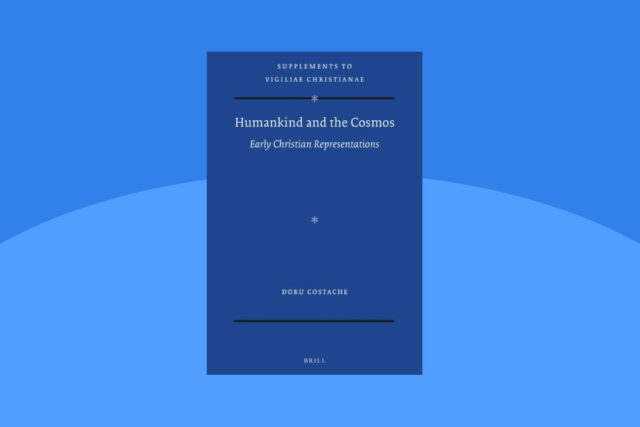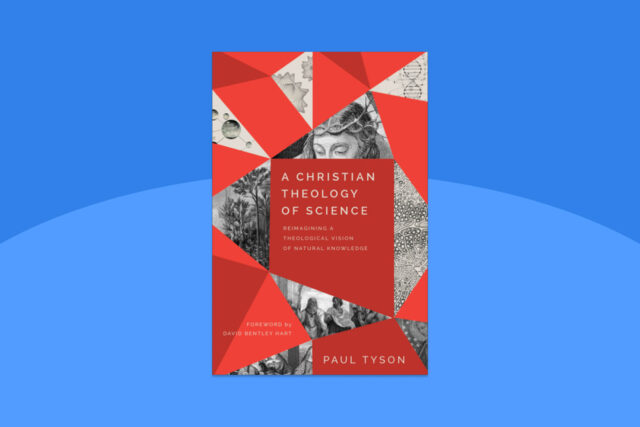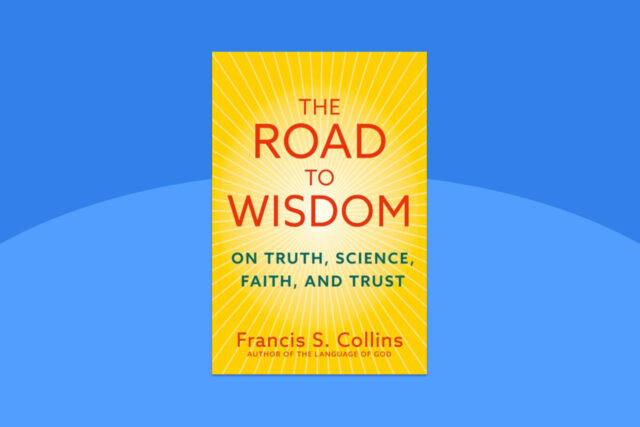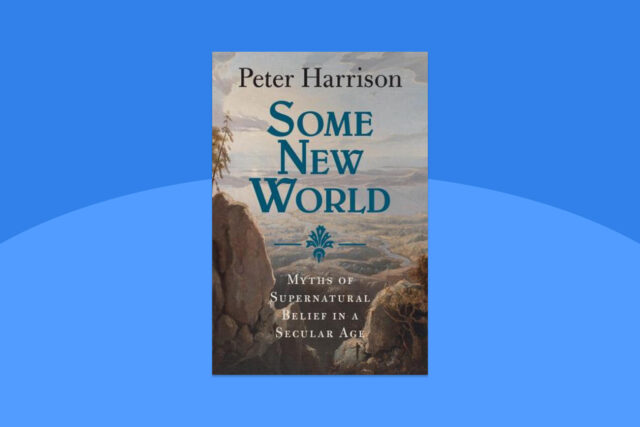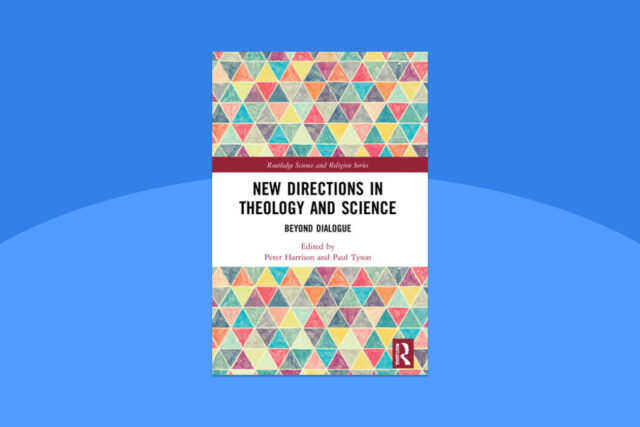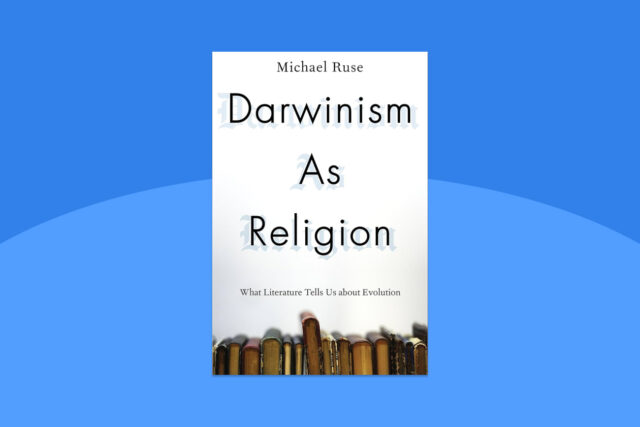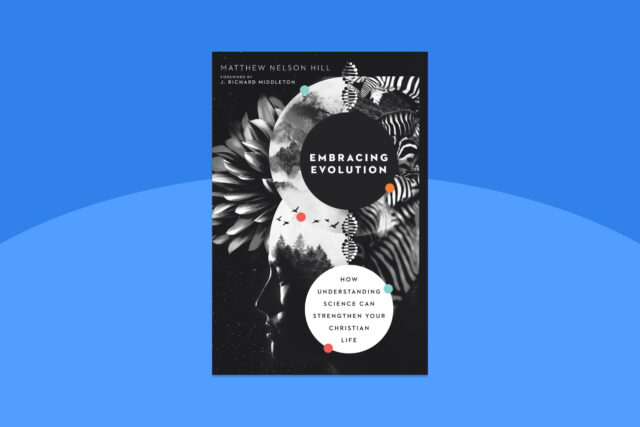
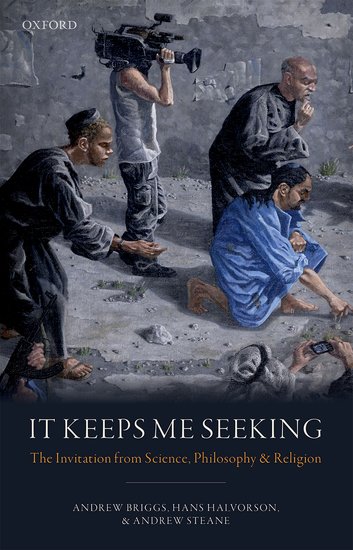

17 September, 2019
Review of It Keeps Me Seeking: The Invitation from Science, Philosophy and Religion, by Andrew Briggs, Hans Halvorson and Andrew Steane (Oxford University Press, 2018)
By John Pilbrow
It Keeps Me Seeking is a breath of fresh air for the faith–science conversation. The authors, two Oxford physicists (Andrew Briggs, Professor of Nanomaterials and Andrew Steane, Professor of Physics) and Princeton philosopher of science (Professor Hans Halvorson), believe science enriches faith and that, conversely, faith enriches science.
What is the book about? In the authors’ own words,
Our central theme is that when we approach God, it is with the whole of our personhood, and we do not begin by insulting God with microscopes. Rather we open ourselves to the notion that God can be trusted and even, yes, known, and it is this open-hearted reaching out, this emphatic liberty to seek and to be received, which is largely what we mean by religious life. Science is part of this, not an alternative to it. But it is fundamental to this whole enterprise that we must apply the techniques of science appropriately, and that means enjoying science at its best. Science is about how to discover the structure of the physical world of which we are a part, not a means to reduce ourselves and our fellow human beings to mere objects of scrutiny, and still less a means to attempt the utterly futile exercise of trying to do that to God. (p. 16)
There is no place in their thought for putting faith and science in separate compartments. Nor do the authors want to waste time on bad arguments. And, they say, “the way in which ‘science and religion’ is often framed as a sort of awkwardness-management exercise for religious types is uninteresting to us.” Note that for these authors, “faith” refers to something that they have reason to believe is true, not something held without evidence. They assert this because they believe Christianity to be true.
Put another way, It Keeps Me Seeking is a response to four themes:
- God is a being to be known, not a hypothesis to be tested.
- We set a high bar on what constitutes a good argument.
- Uncertainty is OK.
- We are allowed to open up the window that the natural world offers us.
Consistent with the spirit of the first theme, the authors caution that “everything we write about God is liable to be more or less impertinent. It is like talking to someone who is there with us, but ignoring them or referring to them as if they were not there” (p. 348).
Arguments for the existence of God from design have a long history, however, the authors provide a vigorous critique of modern versions such as the fine tuning of the physical constants. So-called intelligent design is dismissed and regarded as another God-of-the-gaps argument. The authors remind us that in the emergence of the universe (including biological evolution),while there is pattern, it appears that a deal of improvisation is involved. Readers will readily discover that the authors are not fans of quests to prove God’s existence!
This book provides a unique insight into how and what the authors think, and how they accommodate uncertainty in both faith and science. In fact, with regard to their third theme, faith is the confidence to live with uncertainty. Further, they assert that faith is not certainty but willingness to explore (chapter 20).
Chapters 1, 14 and 20 consist of discussions between the authors: chapter 14 is a critique of naturalism where the authors explain why they refute the New Atheists’ claim that the natural world is all there is. They also show that evolution does not lead to atheism as claimed by Richard Dawkins.
In their individual biographical sketches (Briggs chapter 6, Steane chapter 9, and Halvorson chapter 18), the authors speak openly about their faith in Christ and how they find harmony between science and their faith.
Chapte 5 deals with human identity and what it means to be me: the nature of human existence, what is meant by the image of God, the role of free will and human responsibility. Body-soul duality and Plato’s idea of an immortal soul come in for a hammering. The authors argue that if we want to use the term soul, we must see it as referring to the whole person. In this context, the authors provide a critique of the impact of machine intelligence and machine learning on our lives in the digital information age.
Considerable space is devoted to discussion of quantum physics (including quantum entanglement and the background to quantum computing), general relativity (including a theological reflection), biology and evolution (with an extensive discussion of natural selection). The expositions are both insightful and thorough and will appeal particularly to those with a scientific background. The discussion of quantum computing in Chapter 7, however, may prove daunting for the lay person.
Two chapters (16 and 17) are devoted to miracles, particularly biblical miracles, which the authors remind us that all occurred within the natural world. They reject the common notion that miracles, such as the resurrection, violate the laws of nature. Rather they suggest the breaking in of a higher-level law. (It is worth noting that several articles in the recent issues of Science and Christian Belief relating to healing miracles could be read in conjunction with this book. See vol. 29 pp. 121–141 and vol. 31 pp. 62–77.)
Chapter 19, “Learning from the Bible” is both thoughtful and insightful and helps us avoid naïve approaches to the text. In particular, the authors remind us that the many biblical references to natural processes provide important insights into God’s attitude to his creation. Their reflection concerning what we understand by biblical revelation is also worth pondering carefully (p. 35).
An important question in the light of modern debates with the New Atheism is, Does Christianity impede science? And why do science? The authors’ view is that Christianity recognises the nature of what happened.
In summary, this book is about understanding science within the purposes of God, recognising, as one of the authors says, that
[Jesus’] big phrase is the kingdom of God. This is a large part of my reaction to the young Christian saying … why take an interest in science? It’s because science is right there: part of the kingdom of God. The kingdom of God is not some other-worldly thing that you go to after you die. … To have your heart set on things above means you’re really wanting to share God’s priorities.” (Steane, p. 334)
However, many Christians, particularly, but not exclusively, in the USA, do not share this viewpoint. Steane (p. 297) calls them scientific anti-realists who “use science without worrying that it will conflict with their religious beliefs.” Such an attitude is associated with biblical literalism.
It Keeps Me Seeking sweeps away a good many misconceptions about faith and science and their relationship. In so doing it delivers important messages and challenges for the contemporary church and also for agnostics and atheists, with both wisdom and charity. There is scope for discussion within churches on many of the issues—but someone in your church community will have to read the book first!
This is a thoughtful and insightful addition to the extensive literature at the faith-science interface. But it is deliberately not a conventional apologetic and there is much attention devoted to our uncertainty regarding a good many issues. The authors do not claim to have all the answers, but they believe that we all need to keep on seeking.
The glossary (p. 36) contrasts traditional meanings of terms such as God, religion etc., with different meanings used by the authors. There is a comprehensive index.
A shorter version of this review was published in The Melbourne Anglican of July 2019, p. 26.
John Pilbrow is Emeritus Professor of Physics at Monash University and a Life Fellow and former President of ISCAST.
If you buy the book here, you will also make a small donation to ISCAST through the Amazon Associates Scheme.
For a pdf of the review click here.


